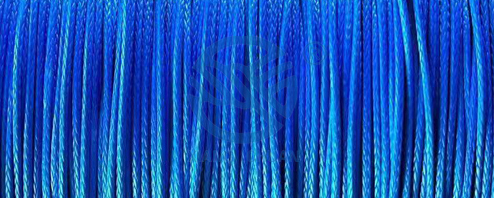biz sənayeyik

Polyamide rope, commonly known as nylon rope, is known for its excellent strength and versatility. However, its performance can be significantly affected when exposed to high temperatures and certain chemicals. In this article, we will discuss how polyamide rope fares in high-temperature and chemical-exposed environments.
Polyamide rope has a melting point ranging from 210 to 250 degrees Celsius, depending on the specific grade of the material. At temperatures above its melting point, polyamide rope will start to melt and lose its structural integrity. Therefore, it is not recommended to use polyamide rope in environments where temperatures exceed its melting point.
Moreover, polyamide rope also shows a decrease in its mechanical properties at elevated temperatures below its melting point. When exposed to high temperatures, polyamide rope experiences thermal degradation, which results in a reduction in its strength and overall performance. For instance, the tensile strength of polyamide rope decreases by approximately 10-20% at temperatures around 120 degrees Celsius.
Besides high temperatures, the chemical environment can also have a significant impact on the performance of polyamide rope. Polyamide is generally resistant to various chemicals, including acids, alkalis, and organic solvents. However, it is susceptible to degradation when exposed to certain chemicals.
Strong acids, such as sulfuric acid and hydrochloric acid, can cause hydrolysis of the polyamide molecules, leading to a loss of strength and durability. Similarly, alkaline solutions, like sodium hydroxide, can also cause damage to polyamide rope. It is important to note that the degree of degradation depends on factors such as concentration, temperature, and duration of exposure.
In addition to acids and alkalis, some organic solvents can also adversely affect polyamide rope. Solvents like acetone, benzene, and toluene can cause swelling and weakening of the rope. It is advisable to avoid contact with these solvents to maintain the integrity and strength of polyamide rope.
To overcome the limitations of polyamide rope in high-temperature and chemical-exposed environments, there are alternative rope materials available. For high-temperature applications, ropes made of materials like aramid (e.g., Kevlar) or fiberglass are recommended due to their excellent heat resistance properties.
For chemical-exposed environments, ropes made of materials such as polypropylene or polyethylene are more suitable. These materials have better resistance to acids, alkalis, and organic solvents compared to polyamide.
In conclusion, polyamide rope has excellent strength and versatility but is not recommended for use in high-temperature environments exceeding its melting point. It also exhibits susceptibility to degradation when exposed to certain chemicals, particularly strong acids, alkalis, and organic solvents. Therefore, it is important to consider the specific requirements of the application and choose an alternative rope material if necessary.
Ünvan:
No.8 Chengnan yolu, chengnan sənaye parkı, Baoying qraflığı, Jiangsu Çin
E-poçt:
E-mail1:vanzer@xcrope.com Vanzer Tao
E-mail2:sales@xcrope.com Wang Peng
E-mail3:grace@xcrope.com Grace Li
E-mail4:info@xcrope.com David Cheng
Şirkət telefonu:
+86-514-88253368
Xaricdə satış şöbəsi:
+86-514-88302931



Copyright © Jiangsu Xiangchuan Rope Technology Co., Ltd. | Bütün hüquqlar qorunur